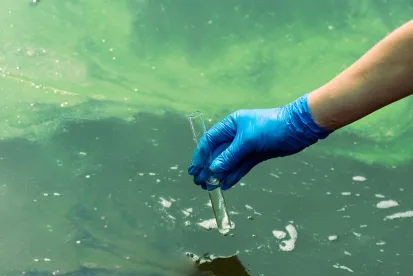U.S. District Court for the Northern District of California Vacates EPA’s Clean Water Act Section 401 Certification Rule
On October 21, 2021, the U.S. District Court for the Northern District of California (“Court”) vacated the U.S. Environmental Protection Agency’s (“EPA”) 2020 Clean Water Act (“CWA”) Section 401 “Certification Rule” (“the 2020 Rule”). In re Clean Water Act Rulemaking, No. 20-cv-4636, et al. (Oct. 21, 2021). The effect of the Court’s ruling is to reinstate EPA’s previous Certification Rule, which had been in effect since 1971 (“the 1971 Rule”). It is clear that the Court intends its ruling to have nationwide effect: by vacating the 2020 Rule, federally permitted projects requiring Section 401 certification throughout the nation will again be subject to the 1971 Rule.
The 2020 Rule was promulgated by the Trump Administration to assist in expediting and streamlining the federal government’s permitting process for projects that require a CWA Section 401 water quality certification. The Biden Administration sought remand without vacatur of the 2020 Rule, but rather than granting the Biden Administration’s request, the Court vacated the 2020 Rule. According to the Court, the 2020 Rule limited rather than expanded the states’ control over setting and enforcing water quality standards by focusing only on the “discharge” and not also on “the compliance of the applicant.” The Court also considered the disruptive effects of vacatur and concluded that, because the 2020 Rule had been in effect only 13 months, and that the 1971 Rule had been in effect for almost 50 years, there was insufficient time for regulated entities to have developed any reliance interests on the new rule.
The District Court’s decision to vacate the 2020 Rule over EPA’s opposition, and without having conducted a complete review the Rule on its merits, may be grounds for challenge. Other district courts in the Ninth Circuit have opined that vacatur is appropriate even in the absence of a merits review of agency action, but the Ninth Circuit itself does not appear to have so held. It remains to be seen whether EPA or industry intervenors supporting the 2020 Rule will appeal the decision.
Assuming the Court’s decision stands, it would appear that, at least until Spring 2023 when EPA has said it intends to have a new Section 401 rule in place, Section 401 water quality certifications will be based on the 1971 Rule. As a result, certifications will likely be less susceptible to challenge as in excess of state authority under Section 401 of the CWA than if the 2020 Certification Rule had been allowed to remain in effect.
For more on this topic, please see our alert.
Department of Energy Report Examines the U.S. Hydropower Permitting Process
The U.S. Department of Energy has published a technical report presenting the results of its examination of the hydropower licensing and federal authorization process, including quantitative and qualitative analyses of licensing and approval timelines, project attributes that may influence those timelines, and their combined effect on costs and risks to developers. The report was prepared with input from a stakeholder working group composed of representatives of the hydropower industry, the Federal Energy Regulatory Commission (“FERC”), federal and state resource agencies, Tribes, and conservation organizations. The report does not propose any specific recommendations to improve the current hydropower licensing process, but is intended to help decision makers identify areas for reform. The report examined a large sample of licenses issued since 2005.
Key findings in the report include:
-
For hydropower investors and owners, the time and costs of the federal licensing process create risk and uncertainty that discourage new hydropower investment and may make relicensing of existing hydropower projects economically infeasible.
-
Despite larger projects having higher licensing costs overall, smaller projects on average had higher licensing costs under a costs/kilowatt metric.
-
Choice of FERC process (Alternative, Integrated, or Traditional Licensing Process) is associated with differences in licensing costs and timelines.
-
Relicensing takes longer and costs more than original licenses—however, this appears to be because modern developers are deliberately choosing sites with fewer environmental impacts for development.
-
The CWA Section 401 water quality certification process is a major driver of licensing delay, although state water quality agencies were able to issue timely certifications or waived certification in 73 percent of study cases.
The report also includes a comparison of the U.S. hydropower regulatory framework with other types of energy and water infrastructure in the United States, and a comparison between the U.S. hydropower licensing process and those in three other top hydropower-producing countries: Canada, Norway, and Sweden. Key findings of this comparison include:
-
All infrastructure project types reviewed in the United States and in other western countries aim to protect the same resource concerns and potential impacts (e.g., water quality, species, cultural resources, recreation).
-
Hydropower licensing under the Federal Power Act (“FPA”) is unique compared to other infrastructure projects in the United States in that the FPA requires equal consideration of developmental and non-developmental values.
-
U.S. hydropower licensing requires more federal agency and stakeholder involvement than other types of infrastructure in the United States or hydropower projects in other western countries.
Changes to the Migratory Bird Treaty Act Enforcement Regime Take Flight
On October 4, the U.S. Fish and Wildlife Service (“FWS”) announced three actions that will significantly change how the Migratory Bird Treaty Act’s (“MBTA”) prohibition on “take” of migratory birds will be enforced. First, FWS published a final rule revoking the prior administration’s January 7, 2021, rule which established that the MBTA does not prohibit the incidental (i.e., unintentional) take of a migratory bird (see VNF’s previous alert). Second, in an effort to clarify its ongoing enforcement position, acting FWS Director Martha Williams issued a Director’s Order providing guidance on how FWS will use its enforcement discretion to prosecute the incidental take of migratory birds. Finally, FWS published an Advanced Notice of Proposed Rulemaking requesting public input on potential options for a regulatory permitting regime that would authorize the incidental take of migratory birds. Continuing the recent trend of competing interpretations of the MBTA, and by reverting back to reliance on FWS’s enforcement discretion, these actions increase the uncertainty associated with MBTA compliance pending the development of a permitting regime for incidental take of migratory birds.
For more on this topic, please see our alert.
Biden Administration Proposes to Walk Back Key Trump Era NEPA Regulation Changes
On October 7, 2021, the Council on Environmental Quality (“CEQ”) published a notice of proposed rulemaking (“Proposed Rule”) to reverse several key changes made under the Trump administration to CEQ’s National Environmental Policy Act (“NEPA”) implementing regulations. The proposed rulemaking—the first phase of a two phase process to reconsider and revise the July 2020 “Update to the Regulations Implementing the Procedural Provisions of NEPA” (“July 2020 Rule”)—announces a narrow, but important, set of proposed changes, which the CEQ states “would better align the NEPA regulations with CEQ and agency expertise, as well as NEPA’s statutory goals and purpose to promote sound decisions informed by science.” It proposes to revert three aspects of the July 2020 Rule back to the prior regulations with minor modifications: (1) the “purpose and need” of a proposed action; (2) the definition of “effects,” restoring the prior definitions of direct, indirect, and cumulative effects; and (3) agency flexibility to develop NEPA implementation procedures that go beyond the government-wide NEPA regulations.
CEQ intends to undertake a broader revisitation of the July 2020 Rule, and to propose further revisions in the second phase to ensure efficient and effective environmental reviews, provide regulatory certainty, promote better decision-making, and address climate change and environmental justice objectives. It is reasonable to expect that some of these additional changes will be aimed at enhancing public participation, transparency, and informed science-based decision-making that could expand the requirements associated with NEPA reviews. The timing of the second phase is not yet clear. In the interim, though it is not clear that the July 2020 Rule has had much in the way of practical effect, the focus on restoring consideration of indirect and cumulative impacts in the Proposed Rule could result in agencies giving greater attention to climate change and environmental justice-related impacts (as environmental justice communities can suffer from compounded impacts from multiple pollution and emission sources). Those subject to environmental review under NEPA will want to pay close attention as CEQ moves ahead with the Proposed Rule and potentially more expansive changes in the second phase of its NEPA rulemaking effort. Comments on the Proposed Rule are due by November 22, 2021.
For more on this topic, please see our alert.







 />i
/>i

